
Hypoxic and anoxic regions in the Baltic Sea, 2017
The content of this webpage is additional content for the Marine Science Report No 100 2016 and should be cited as:
Susanne Feistel, Rainer Feistel, Dietwart Nehring, Wolfgang Matthäus, Günther Nausch, Michael Naumann: Hypoxic and anoxic regions in the Baltic Sea, 1969 - 2015. Meereswiss. Ber., Warnemünde, 100 (2016) doi: 10.12754/msr-2016-0100

This work is licensed under a Creative Commons Attribution-NonCommercial 4.0 International License.
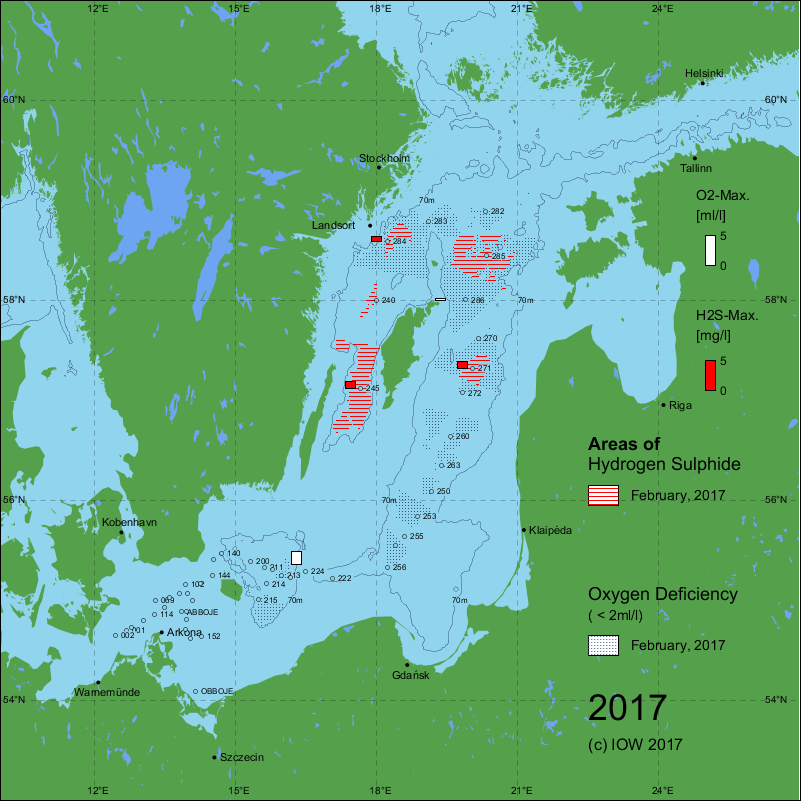
Jan/Feb, 2017: download SVG (computed 2017)
|
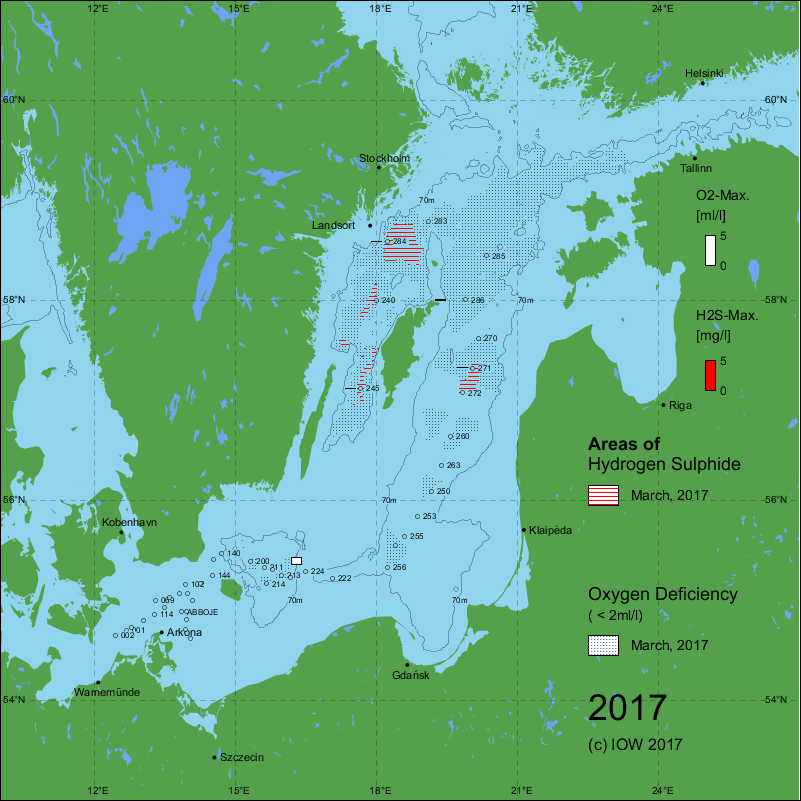
Mar/Apr, 2017: download SVG (computed 2017)
|
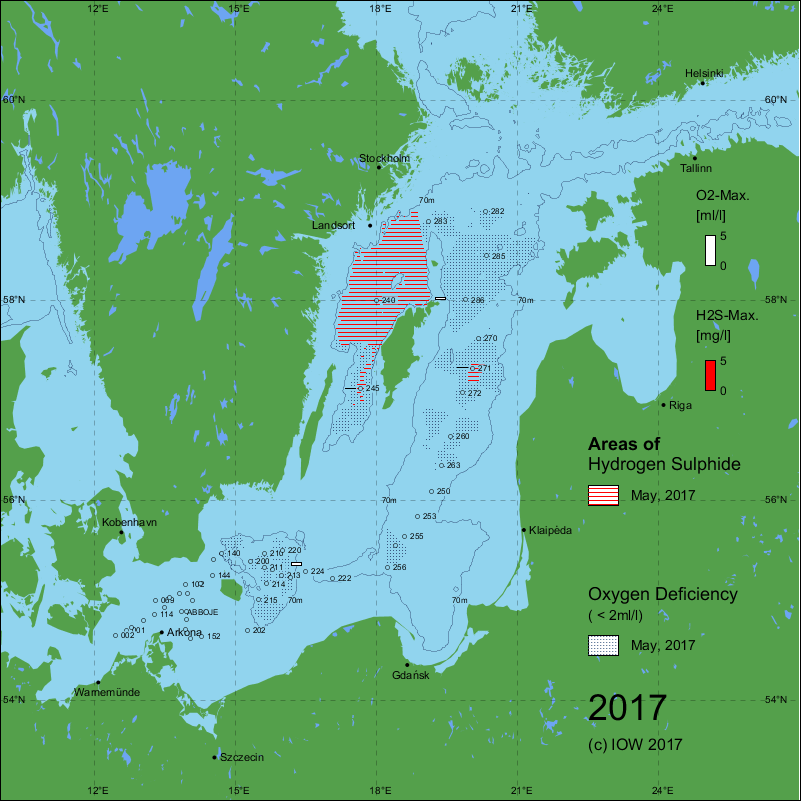
Apr/May, 2017: download SVG (computed 2017)
|
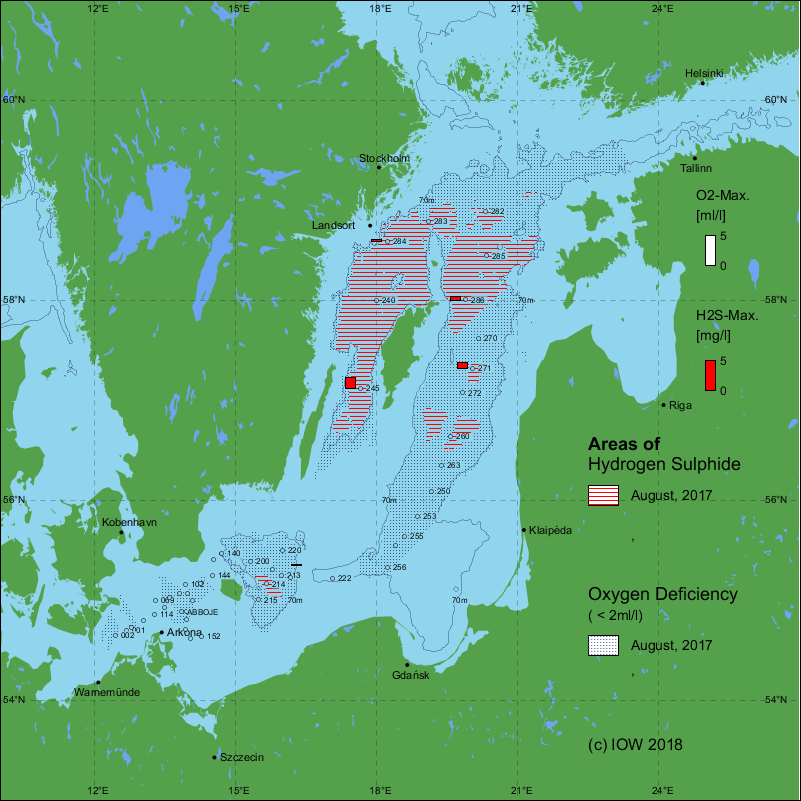
Jul/Aug, 2017: download SVG (computed 2018)
|
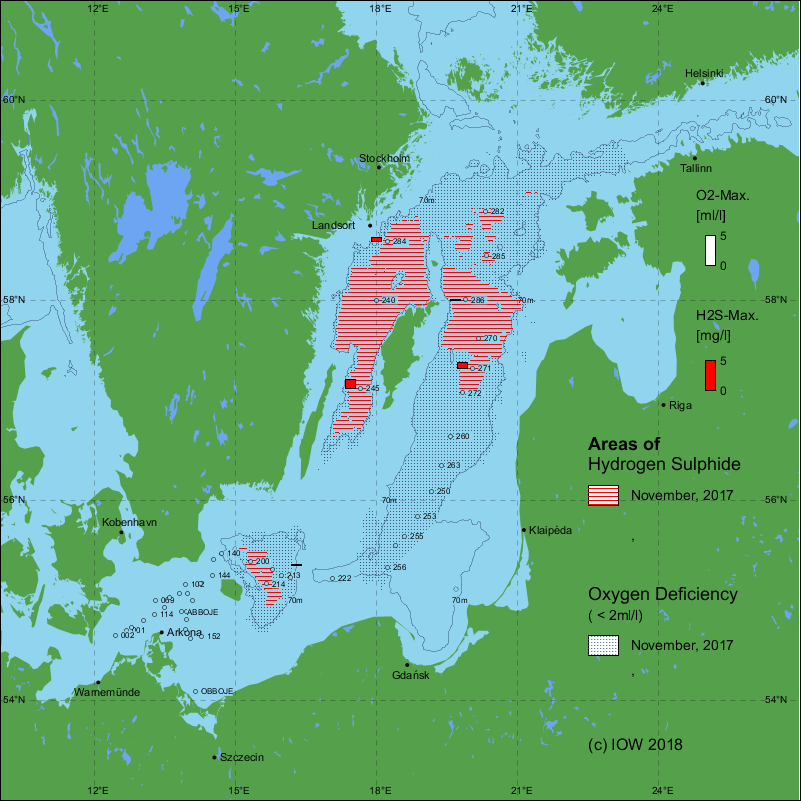
Oct/Nov, 2017: download SVG (computed 2018)
|
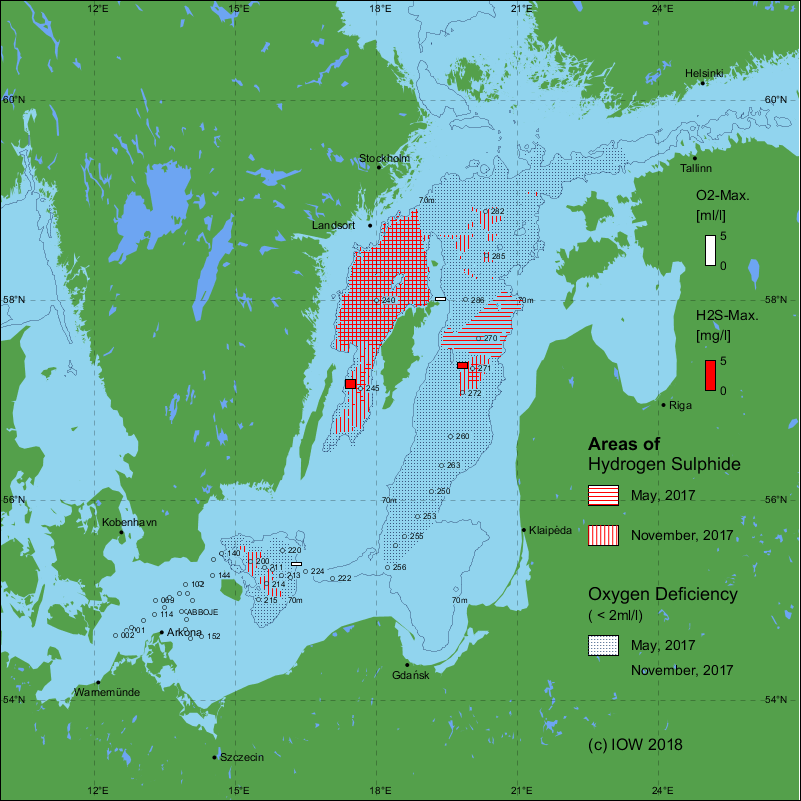
Apr/May & Oct/Nov, 2017: download SVG (computed 2018)
|
Distribution maps for 2017. During wintertime 2016-2017 four weak inflows occurred, showing total inflow volumes of 184 km2 in the end of October 2016, 171 km2 in end November to beginning December, 182 km2 around Christmas and 210 km2 in February 2017. The intensive inflow activity of the previous years, where Major Baltic Inflows occurred in March 2014, December 2014, November 2015, January-February 2016 and additional several weak events, continued on a lower level. None of these latest four inflows could be classified as Major Baltic Inflow. The preconditioning of hydrographic conditions in the deep-water of the western and southern Baltic basins by earlier events of 2014-2016 eased the propagation to cross the Slupsk Sill of these latest events. This series of weak inflows reached the central Baltic Sea and contributed to the ventilation of the deep-water. For the first time in this inflow phase since 2014 oxygenated water crossed the Sill in the eastern Gotland Basin and the bottom of the Farö Deep was ventilated in February 2017. As a consequence, hydrogen sulphide reduced up the mid of the year in the northern Gotland Basin. Afterwards hydrogen sulphide increased again in this area (NAUMANN et al., 2018).
References:
- NAUMANN, M., UMLAUF, L., MOHRHOLZ, V., KUSS, J., SIEGEL, H., WANIEK, J., SCHULZ-BULL, D., 2018: Hydrographichydrochemical assessment of the Baltic Sea 2017. – Meereswiss. Ber., Warnemünde, 107